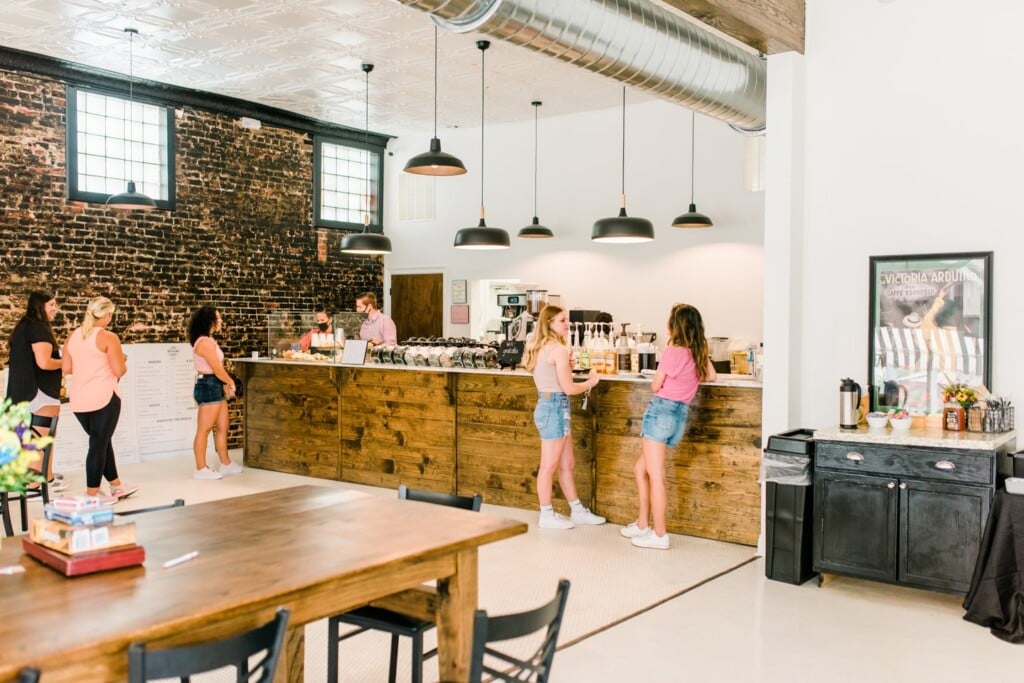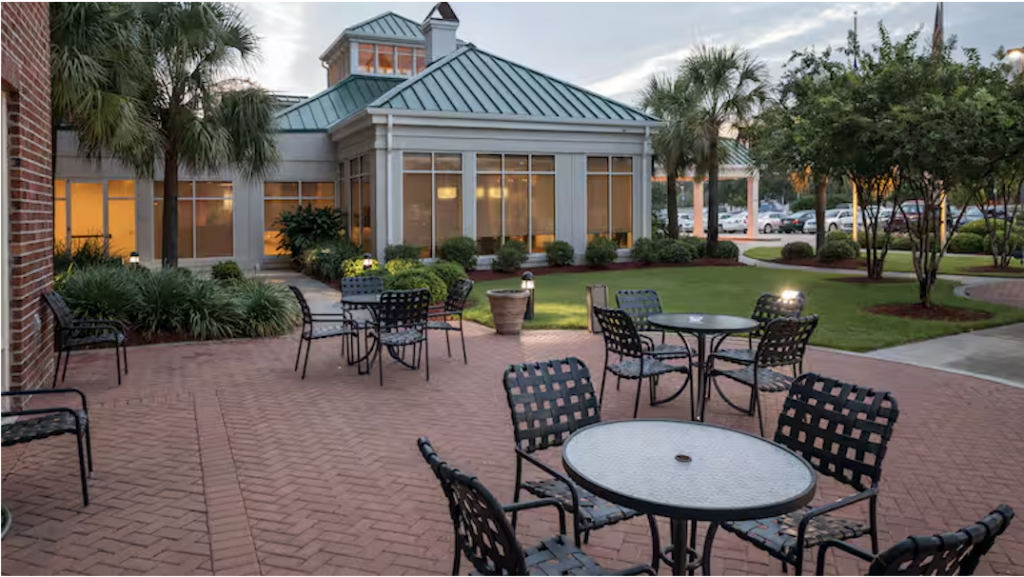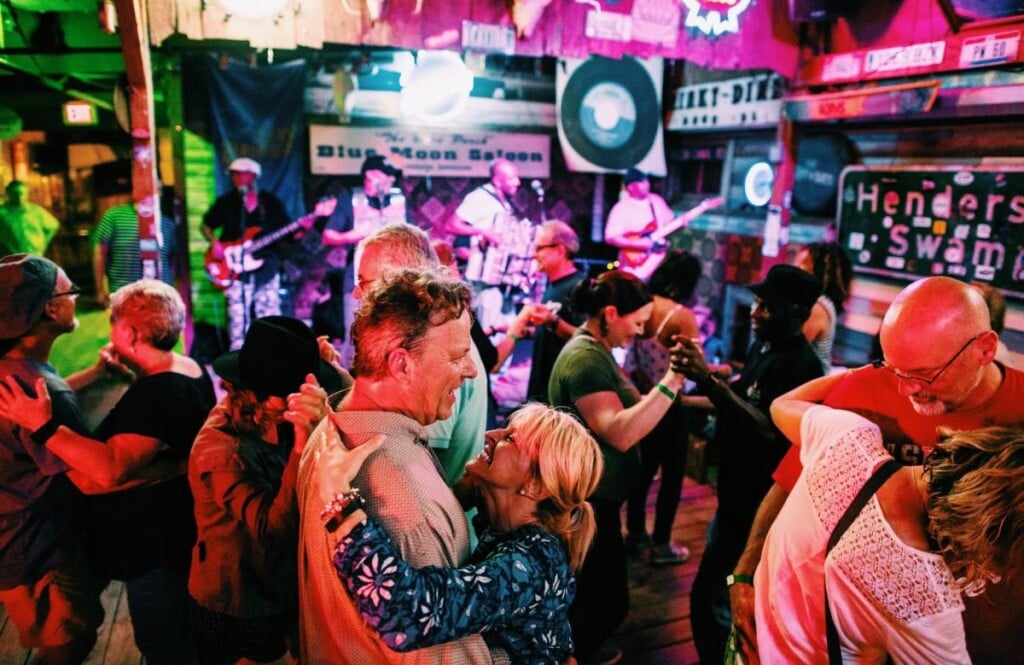The Cajun Rodeo of South Louisiana Brings A Little West in the South
Providing entertainment, preserving culture and bringing communities together

(Right) Two young spectators at the CRA Rodeo in Houma, LA.
It’s rodeo night in Sulphur and despite temperatures just above freezing, a crowd of local cowboys and southern Louisiana families are steadily filling up the stands. Some are huddled around small propane-fed space heaters, which glow with subdued roars throughout the audience; others are bundled in camo or home-woven shawls or lean here and there in cowboy hats and leather rodeo jackets — enduring it for the sake of the culture, for the sake of the show. Out back with the livestock, those not working their horses or rushing about with clipboards are gathered around a communal fire between the bull trailers.
Tonight is no small event. The top-ranked cowboys and cowgirls from the past year of rodeos put on by the Cajun Rodeo Association (CRA) are gathered here for two nights of back-to-back finals, where over $100k in cash and prizes are up for grabs for the champions in seven events: ranch-style bronc riding, calf roping, breakaway roping, barrel racing, team roping, bulldogging and bull riding. For those unfamiliar with rodeo events, bronc riding entails a saddled rider clinging to a high-flying bucking horse, a performance judged on the intensity of the horse’s wild agility and how smoothly the rider manages it; the three roping events involve roping calves from horseback in a variety of ways; bulldogging pits man again steer in a contest of strength and will in which the man must wrestle the animal to the ground and twist him by the horns until the top of his head touches the dirt; barrel racing is a women-only event that involves racing in the fastest time around a triangle of three barrels; bull riding, which attracts some of the youngest participants while simultaneously being the most dangerous, is self-explanatory — the aim being to remain atop a bucking bull for eight tumultuous seconds.

(Left) A contestant holds on at the beginning of another round of ranch-style bronc riding. Sulphur, LA. (Right) Every CRA Rodeo begins with a prayer to keep the contestants and animals safe, followed by the national anthem. Sulphur, LA.
For an entire year, contestants have shuttled themselves and their animals from town to town throughout South Louisiana -— from Amite to Houma, from Scott to Napoleonville, and beyond— to earn their place in this weekend’s finals. Without the CRA, which is based in South Louisiana and conducts all of its rodeos here, athletes from Cajun country would need to drive 8-10 hours, to places like Texas, North Louisiana or Arkansas, to rodeo. The CRA provides opportunities close to home where these cowboys and cowgirls can develop and test their skills. Given that contestants must pay to compete and cover their own travel expenses (meaning food, accommodation and transport long distances for themselves, their families and their animals), and that only a handful walk away with prize money, the CRA’s presence is what makes participation in the rodeo lifestyle possible for South Louisianians. Traveling farther away would mean less development at the amateur level, making it more challenging for those who want to pursue rodeo professionally.
The CRA has served as an important step on the road to going pro for athletes such as Waylon Buquoi, 18, from Slaughter, Louisiana, who was the CRA’s top bull rider in 2022. Buquoi says he first got into bull riding at age 2, starting on little calves.

(Left) Rodeo clown Preston Broxson with his Cajun Mardi Gras dummy and props for his acts, Sulphur (Right) A contestant secures his hat before a bronc ride Houma
“From there I kept moving up,” Buquoi says. “Up to steers when I was 7, then mini bulls, then junior bulls. Now I’m riding open with the CRA.”
He began riding bulls at CRA rodeos in 2022 and won the championship his first year of participation. These Cajun Rodeos served as an essential introduction to competition at an amateur level, giving him the confidence to go pro in 2024 and begin competing at national rodeos with the PRCA. For a young cowboy with limited resources in South Louisiana, the CRA is a great opportunity.
“With the CRA, you just don’t have to travel as far,” Buquoi says. “And you don’t have to spend so much money on gas just getting there.”
Providing opportunity to those like Buqoi is what the CRA is all about.

Mutton busting, a sheep-riding event for young children, at the CRA Rodeo, Houma
“We are the only amateur rodeo association based in the South,” says Ben Watson, president of the CRA. “What makes this organization special is that it is based on a working person’s mentality and ability, meaning that the guy or woman who works 9 to 5 Monday through Friday still has the opportunity to rodeo. These are your local a/c guys, your electricians, your working people. Some will end up going professional and those that do always like to come back to the CRA, where they began, to compete when they’re in town. It’s a great association to keep the Western way of life alive.”
It’s not only in the arena that this culture expresses itself, but in the audience, which is remarkably family-oriented. Outside the occasional lonesome cowboy, the majority of the spectators arrive as families. Roughly one in four are small children, scampering around in boots and cowboys hats, riding make-believe horses, roping invisible calves that they chase from atop lithium-powered hoverboards. It is a safe environment for children to run wild and interact with their peers, an opportunity for community members to reunite and catch up, for teenagers to preen and socialize and occasionally, perhaps, look to the arena and be inspired to compete themselves.

(Left) Calf roping competition at the CRA Finals, Sulphur (Right) A young cowboy come to watch the rodeo. The CRA is proud of the family-friendly atmosphere it cultivates, Houma
“The whole point of what we’re doing here is bringing communities together,” says Watson. “Bringing a light to someone who has never seen rodeo before and maybe inspiring them to go down the path of being in the Western way of life and living in the way of our ancestors.”
I’ve been to countless rodeos throughout the United States and Mexico, and was on the lookout for what makes a Cajun rodeo of South Louisiana unique, besides the obvious, such as the overabundance of French last names (Leblanc, Broussard, Boudreaux, etc.) or the fact the rodeo clown dressed his prop mannequin in a Courir de Mardi Gras outfit. Hints of it came in the men’s restroom, when a cowboy struck up a conversation in the stalls, asking everyone where they’re from and didn’t fully seem to believe I’d come “all the way” from New Orleans — a three-hour drive. He himself was from Church Point, here to watch his younger cousin team rope. More clues came from the crowd, snacking on boudin and cracklins, and from the ethnic makeup of both athletes and audience, which mirrored the diversity of the region. In the end, I decided it was in the relaxed, genteel friendliness of all those present, a mood so common in South Louisianan culture that it is difficult to fully recognize when you are among it, and only when you venture elsewhere do you realize that something, some subtle Cajun ingredient, is missing.

(Left) Chute dogging, in which contestants must wrestle a steer to the ground, at the CRA Finals, Sulphur (Right) A father and son lined up for the mutton busting competition at the CRA Rodeo, Houma
That said, you need not be from South Louisiana to participate in CRA rodeos — that just happens to be where a majority of participants come from.
“We pull folks from Mississippi, Texas, Arkansas,” says Davis. “Occasionally, we even get bull riders from Brazil, or, for instance, bronc riders from Montana, who rodeoed with us while they were down here in Louisiana pipelining.”
“For rodeos in this region, the CRA is probably the hottest thing going on right now,” says Jana Browning, a barrel racer from Zachary, Louisiana, who has competed with the CRA for more than seven years. “They pay well, they get a lot of entries and the people on the board work really hard to support the association and make their rodeos fair and safe for everyone.”

(Left) Concession stand at the CRA Rodeo, Houma (Right) A contestant wrestles a steer to the ground during the chute dogging competition at the CRA Finals, Sulphur
Browning began her rodeo career team penning, then moved on to cutting, then in her senior year of high school her parents bought her a barrel-racing horse and that has evolved, nearly 20 years and many horses later, into this, her eighth time competing in the CRA finals.
It is for those like Browning that the CRA, founded in 1990, has been putting on 22-24 rodeos every year for nearly a quarter century. That requires a lot of work, especially considering that the board members who organize these rodeos are working people with families. An event like the finals requires months of coordination and planning. For the organizers, all that time and effort is worth it — it’s a way to do their part to continue the Western way of life while bringing an economic boon to communities where they hold their rodeos. With 300+ contestants over a weekend of rodeos (not to mention their families) all buying groceries, renting hotels rooms, eating out and so on, that’s a whole lot of money and culture pouring into these small South Louisiana towns.


